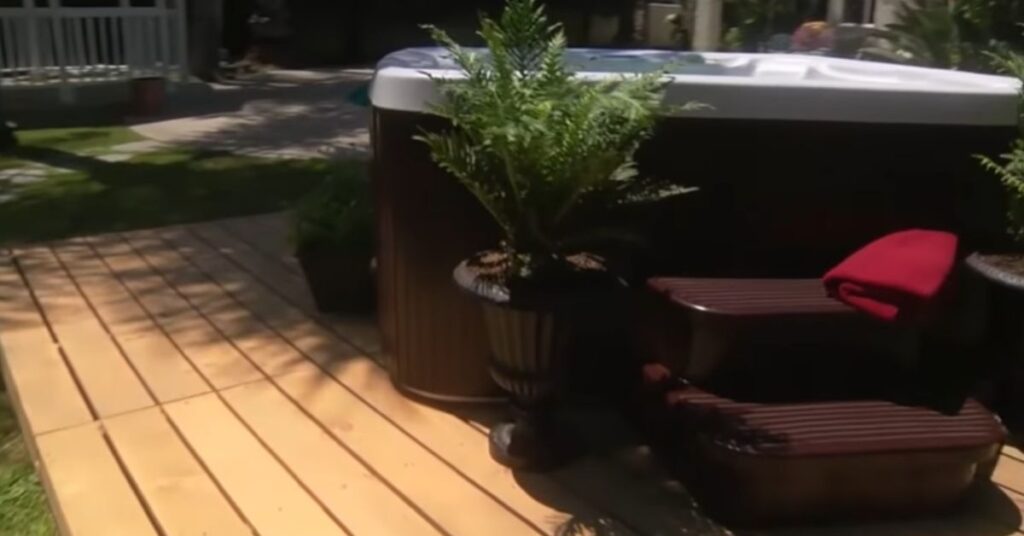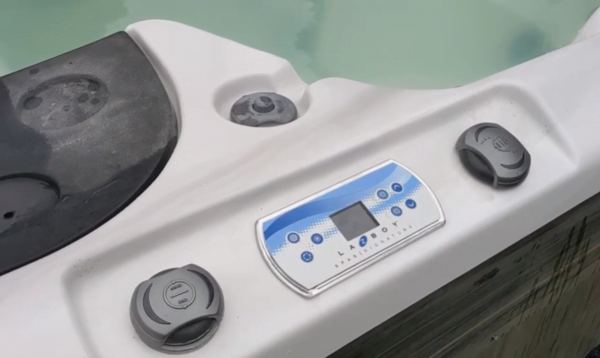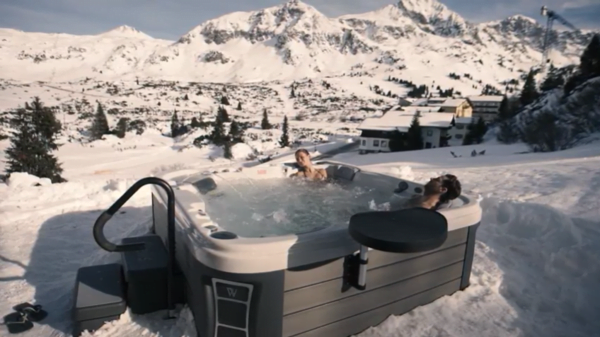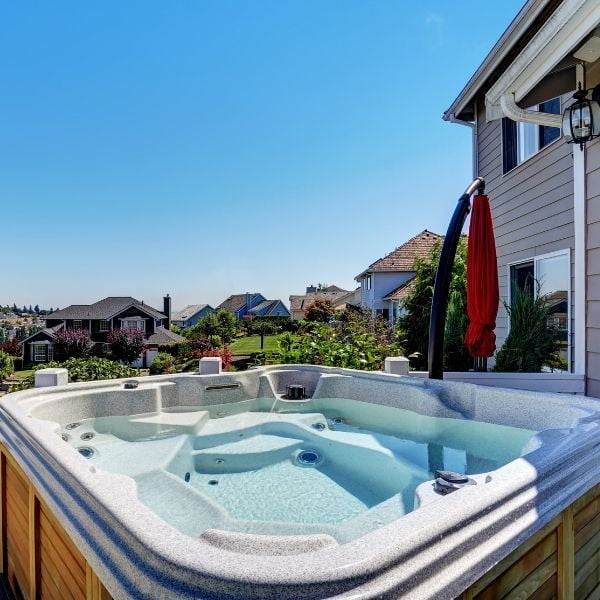This article shows you how to find the perfect temperature setting for your hot tub and discusses the benefits of maintaining the right temperature.
When it comes to finding the perfect hot tub temperature setting, you'll want to make sure that you're comfortable in your hot tub - not too hot nor too cold. You also need to consider many factors like the climate, who will use it, and how often. So how do we find the best hot tub temperature setting, and do we need to maintain the correct temperature in our hot tubs?
What is the ideal hot tub temperature?
The ideal water temperature for a hot tub is between 100° F and 104° Fahrenheit (38 to 40 degrees Celsius). This water temperature range is considered healthy for everyone, not just those with arthritis.

However, this may vary based on personal preference, age, and current health conditions. Children and pregnant women, for instance, are more sensitive to higher temperatures, so the ideal hot tub temperature for them might be a little lower - somewhere between 95 and 98 degrees Fahrenheit (35 to 37 degrees Celsius)
Start low, then gradually raise your hot tub temperature.
It's easier to go up little by little than to wait it out once your hot tub is already too hot. Use the lowest setting and gradually increase the temperature. You can go as low as 98° or 99° (37 degrees Celsius) - which is around the same temperature as an average healthy person - and increase the temperature as you like.
You can tell when you've overshot it if you can't sit still for a couple of minutes. Dial down a little bit till you feel more comfortable. Also, keep in mind if you're sharing the hot tub with everyone else to set the temperature everybody will enjoy.
Key Takeaways: Make slight increments when getting your ideal hot tub temperature. Set the range above and below your sweet spot to give some leeway during summer or winter.
Changing your hot tub's temperature
Once you've found a temperature that everyone agrees on, stay within that range. Don't raise or lower the temperature too much as this will increase operational costs and add wear. Your hot tub has built-in temperature controls that allow you to maintain your desired temperature more efficiently.
Also, keep in mind the heat elements in your hot tub have been engineered for efficiency, not the rapid heating of the water. Frequent adjustments to the heat will damage the system. This will burn more energy, and the heating element will struggle to keep up with your varying hot tub settings.


A much smarter way is to insulate your hot tub. Once you've reduced the ambient heat loss, your heater doesn't have to work as hard to maintain your set temperature, significantly bringing down your heating costs.
In addition to saving energy by not having to crank the heater up higher every time you use the hot tub, you won't have to wait for the water to warm up to your desired temperature, which could take several hours.
Key Takeaways: Maintaining your hot tub's temperature at a certain level where it doesn't have to work hard to reach your desired temperature will save you more in the long run than frequently switching your heater on and off.
Hot tub temperature during winter
The ideal hot tub temperature in the winter is a bit more subjective. Some hot tub owners prefer keeping their hot tub between 100°F and 102°F. Just remember that the water should be about 98.6 degrees Fahrenheit (37°C) in the winter.
Make sure to monitor your water level during the winter. Low water levels can cause your pump to malfunction and cause the freezing of your hot tub water, which could damage your hot tub's mold and the plumbing fixtures and parts.


Tip: If you have a big yard, consider keeping a hose handy to easily fill up your hot tub. This allows you to easily thaw the outside water spigot so that you can connect your hose and then fill up the hot tub.
Make sure to check the water temperature in the hot tub often. If the water gets too cold, shut off the heater and warm it back up with a heating pad or heater.
Hot tub temperature during summer
In an extremely hot climate, you may find that keeping the temperature down a little during the summer can make for much more comfortable bathing. The hot tub will be cooler than your body, and you'll feel refreshed during hot days.


Key Takeaways: Different conditions such as hot or cold climate will also impact the ideal temperature for your hot tub. Be sure to take that into account when choosing your ideal range you can stick to the whole year round while keeping your hot tub in optimal condition.
Conclusion
The best temperature setting for a hot tub goes down to personal preference. Before purchasing a new hot tub, you should figure out the best temperature setting for your climate. Some brands can't go higher than 104 degrees Fahrenheit (40 degrees Celsius) due to state regulations, but if you need something much higher, you can also find one. Just be aware of your health conditions or other people's use, so your hot tub is safe for everybody.
